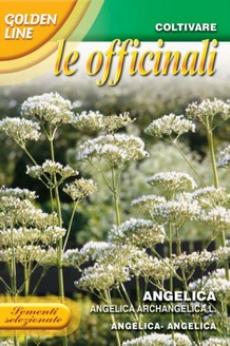
Angelica Archangelica L
Angelica Archangelica L is a plant belonging to the Apiaceae family. The fluted stems are composed of jagged leaves made up of numerous small leaflets on short stems, each group forming a ball. The subsequent white flowers form umbrellas. Roots are deep and the plant can easily reach over 3 feet tall. Use: The stem and the fresh flowers, harvested during the summer, can be used in the kitchen to flavor a wide range of dishes such as eggs or fish, is candied and is also used in vermouth. The dried roots can be used for infusions and herbal teas. Caution: Angelica should not be used for those with stomach ulcers. Eating too much angelica can cause skin irritations and rashes. Properties: Angelica has depressants, calming and digestive properties.
Angelica archangelica, commonly known as Garden Angelica, Holy Ghost, Wild Celery, and Norwegian Angelica, is a biennial plant from the Apiaceae family, a subspecies of which is cultivated for its sweetly scented edible stems and roots. Like several other species in Apiaceae, its appearance is similar to several poisonous species (Conium, Heracleum, and others), and should not be consumed unless it has been identified with absolute certainty. It has fluted stems with jagged leaves made of small leaflets, each forming a ball. Subsequent white flowers have an umbellifera form. Deep rooted. Used as a cut flower in the summer. Can also flavor a wide variety of disthes like eggs or fish. Can be candied and is also used in vermouth. The dried root is used for infusions and herbal teas.
Approximately 400 seeds.
Angelica requires cold and light to germinate. The best way to grow is to press seeds into moistened potting mix in a jiffy pot or other container, then put the pots in a plastic bag and place in the refrigerator for two to three weeks. After the chilling period, place them in bright light at 60-65 degrees F. Keep soil mosit, but do not cover the seeds. Germination may take three to four weeks. The germination rate is low, so plant severeal seeds per pot and thin the extras later when they are growing well.
